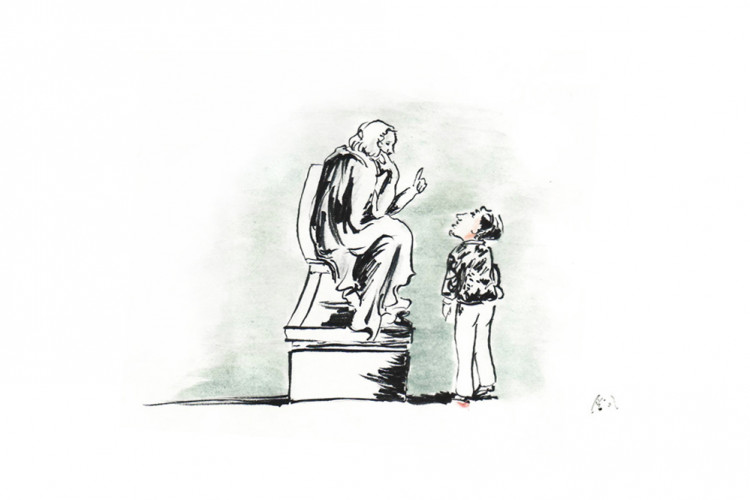
It is like clockwork. A tragic shooting with a youth at the trigger. Once games are discovered in his bedroom, the headlines seem to write themselves. We have all seen them:
“Young Boy Shoots Friend After Playing Game”
“Video Game ‘Murder Simulators’ Corrupting our Youth”
Underlying these headlines is a common conception that the violent nature of many video games causes similarly violent behaviour. This notion has persisted despite multiple studies showing the contrary. However, great articles on both sides of the issue have already been written; today I would like to sidestep this debate and make a slightly different point. Even if games do not cause violent behaviour, it is in the best interest of everyone to have more non- violent games. Notice I am not necessarily calling for fewer violent games, I just want more diversity. A wide variety of content spanning different genres would draw in new players. This would mean more people playing and enjoying games, a result I always support.
The first question we have to ask is why there are so many violent games to begin with. The knee-jerk reaction to this question is to assume that the content of games is simply a function of who makes them: i.e. only violence-loving men are making games, therefore most games are violent. This is not correct. The modern video game industry includes people from a variety of cultural and demographic backgrounds. No, the answer to this question in more deeply rooted in the nature of games themselves.
To play a game successfully there are several key pieces of information the player must grasp: the win condition, the relationship between different game elements, and the lose condition. An easy example is Pac-Man. Although most of us never consider it while we are pacin’ away, the elements in Pac-Man are deliberately and ingeniously designed. First, the relationship between the elements is clear at a glance. The player character consists of nothing but a giant mouth; he devours. There are a bunch of yellow dots just waiting to be gobbled up. Fruit is delicious, let’s eat it. Ghosts are scary, let’s run from them. Following from these intuitive relationships, the win/lose conditions are also easy to understand. Eating is good; therefore if I eat everything I win. Ghosts are bad; therefore if they touch me I lose. Like many games before and since, loss is communicated to the player through the death of the main character. In other words, violence has been a part of games since their inception because violence makes for good, simple games.
This is not limited to digital games. To the dismay of many new parents, children are great at using their imagination to transform various items into pretend weapons with which to play-kill their friends. Sticks become swords, bananas turn into pistols. I once defeated an entire playground of attackers using only an old cardboard tube that doubled as a rocket launcher. These become the building blocks of rudimentary games.
With video games, fantasy takes a back seat to digital models. We are now able to bring these interactions to life and build entire narratives around them. Through this whole process, however, the relationships between elements remain. The player still losses when she die, which means she usually wins by killing everything around her. As in Pac-Man the same fundamental design decisions are true in Call of Duty. I become a disembodied head with a gun, therefore I shoot. There are scary people running towards me trying to kill me, therefore I kill them first. If the game systems are well implemented, this will (and often does) lead to a challenging and enjoyable game experience – but it is just so damn violent.
Which brings us to our next question. If violence plays an important role in communicating goals and rules of a game to the player, how does one design a game without violence? Luckily we are not alone in pondering this query. By looking at some recent examples in peaceful games, we can see how some games approach the challenge. Gone Home is a game by The Fullbright Company, an independent game study based in the northern United States. In Gone Home, the player controls a woman who arrives at her childhood home after some time away. The genius of Gone Home is that, unlike many violent games that depend on our primal survival instincts to impart info about interactions and win/lose conditions, it uses familiar iconography from our everyday life. The game starts with our character standing outside the front door of a house. The sound of rain and thunder prompts us to enter. A quick audio cue before the game began has let us know that we are in fact returning home, and thus a more peaceful everyday heuristic is activated. Thus, when we find ourselves outside this door, we do not attempt to kick it down in a flurry of splinters (as might be a sound strategy in a war game) but instead start hunting for the spare key that our mom has hopefully hidden for us. Sure enough, we find it and enter into home.
Once inside we find many other familiar items you would expect to find in a home. We are rewarded not though killing but by exploring. By looking around we slowly uncover the back story of our character’s family life. Gone Home is a game that I believe everyone should play, so I wont spoil any story beats. However, suffice it to say that it succeeds as a video game without introducing a weapon or sending a single enemy to kill the main character. As opposed to falling back on the grand narratives of battling heroes and tyrants that fill many pulpy games, Gone Home tells a more touching story precisely because its world is mundane. It is a testament to the long-standing relationship between games and violence that there are people who dispute Gone Home‘s classification as game at all. Ironically, the simplicity of fighting in life and death scenarios can be comforting when compared to an interactive experience that has themes that resonate closer to home.
I believe that the video game industry as a whole benefits from Gone Home and other games like it. Regardless of the functional reason for violence in games, there are many people who will write off games simply because of their graphics. This saddens me greatly. Play is a fundamental aspect of human nature, and a more diverse palette of game themes allows more people to play games without having to watch a guy’s head explode. Again, regardless of the adverse effects games may or may not have on children, we can all agree that diversity in video games is something positive.











